———————————————————————————————————————
The 2017 International Workshop on Advanced Computational Intelligence and Intelligent Informatics (IWACIII 2017) is co-organized by the State Key Laboratory of Intelligent Control and Decision of Complex Systems, and the School of Automation, Beijing Institute of Technology, P. R. China. It will be held at the China Hall of Science and Technology, Beijing, during November 2-5, 2017. IWACIII 2017 is an international conference that provides a forum for scientists and engineers over the world to present their own theoretical results and techniques in the field of computational intelligence and intelligent informatics. The conference proceedings have been cited by EI since 2009, selected excellent papers will be published in the special issue of JACIII (Journal of Advanced Computational Intelligence and Intelligent Informatics, ESCI/SCOPUS/EI indexed). Taking this opportunity, we sincerely welcome our colleagues worldwide to join us for this workshop.
Paper Submission Deadline ------------------------ July 15, 2017 (No more extensions!!!)
Notification of Acceptance ------------------------ August 15, 2017
Final Camera-Ready Paper Due ------------------------ August 25, 2017
Deadline for Early Bird Registration (also see the Registration information) ----August 25, 2017
Conference Period ------------------------ November 2-5, 2017
Deadline of Organized Session Proposal: July 15, 2017 (No more extensions!!!)
Paper Submission Deadline for Organized Session: July 15, 2017 (No more extensions!!!)
Daizhan Cheng (程 代展)
Institute of Systems Science, AMSS, Chinese Academy of Sciences
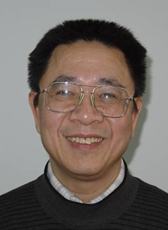
Title: On Game Theoretic Control
Abstract: Game theoretic control (GMC) is a rapidly developing cross-discipline between control theory and game theory. It is a promising new approach to distributed optimization/control. "There are wide-ranging advantages to the game-theoretic approach including robustness to failures and environmental disturbances, minimal communication requirements, improved scalability, and real time adaptation." After a brief reviewing on some basic concepts of game theory and potential game, this talk introduces some recently developed techniques in GMC, including the architectural structure of GMC, the utility design for distributed welfare games, the approximation algorithm, etc. Finally, we report our recent contributions: potential equation (PE) -based utility design and PE- based facility pricing.
Bio: Dr. Daizhan Cheng graduated from Tsinghua University in 1970, received M.S. from Graduate School, Chinese Academy of Sciences in 1981, and Ph.D. from Washington University, St. Louis, in 1985. Since 1990, he is a professor with Institute of Systems Science, AMSS, Chinese Academy of Sciences. His research interests include nonlinear control systems, switched systems, Hamiltonian systems, Boolean control networks, and game theory. He is the author/coauthor of 14 Books, over 250 Journal Papers and over 150 Conference Papers. He was Chairman of Technical Committee on Control Theory, Chinese Association of Automation (2003-2010), member of IEEE CSS Board of Governors (2009, 2015), and IFAC Council Member (2011-2014). He is IEEE Fellow (2006-), IFAC Fellow (2008-). He received Second National Natural Science Award twice (in 2008 and 1014), Outstanding Science and Technology Achievement Price of CAS (2016), and the Automatica Best Methodology/Theory Paper Award (2008-2010), bestowed by IFAC.
Osamu Hasegawa (長谷川 修)
Tokyo Institute of Technology, SOINN Inc.
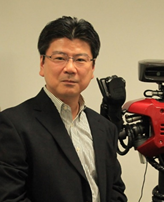
Title: SOINN - An Artificial Brain for Intelligent Agents.
Abstract: "SOINN" (Self - Organizing Incremental Neural Network) is an unsupervised online-learning method capable of incremental learning. By approximating the distribution of input data and the number of classes, a self-organized network is formed. SOINN offers the following advantages: network formation is not required to be predetermined beforehand, high robustness to noise, and reduced computational cost. Dr. Hasegawa believes that in the near future, a SOINN device will accompany an individual from birth; this will allow the agent to share personal histories with its owner. In this occasion, a person's SOINN will know "everything" about its owner, lending assistance at any time and place throughout one's lifetime. Besides having a personal SOINN, an individual can install this self-enhanced agent into human-made products - making use of learned preferences to make the system more efficient.
Bio: Dr. Osamu Hasegawa is a Japanese researcher in the fields of artificial intelligence and intelligent robotics at Tokyo Institute of Technology. As the Principle Investigator (PI) of the Dept. of Systems and Control Engineering, he is leading a research group to further develop an innovative learning mechanism, "SOINN" (Self - Organizing Incremental Neural Network). In addition to being a PI of Tokyo Tech, he is CEO in the SOINN Inc. since 2014.
Isao Hayashi (林 勲)
Kansai University

Title: Data Science of "Shinayakana" Decision on Advanced Computational Intelligence
Abstract: When making new decisions, human beings generally make appropriate decisions by taking into consideration the external environment, as well as how they interact with that environment. The ability to make new decisions is here termed “Shinayaka (Flexible)” decision or “Soft” intelligence. In this talk, I give an outline about a decision-making model that adopts principles of soft computing originating in the fields of data science and brain engineering. First, I explain how data can be approached with a “Shinayaka” decision model. In this context, I describe fuzzy inference in a clustering model that controls "Vitroid", a robotic system with an interface between a living neuronal network and the external world. Next, I describe a “Deep Inference” method as a form of ensemble learning. In particular, I discuss how to apply this deep inference method to the analysis of brain signal and the extraction of “Skill” intelligence from motion data gathered in table tennis. Finally, I describe methods based on singular spectrum analysis to evaluate gesture and walking motion for rehabilitation purposes.
Bio: Isao Hayashi is a full professor, Faculty of Informatics at Kansai University, Osaka Japan. He received the B.Eng. degree in 1981, the M.Eng. degree in 1985 and the Ph.D. degree in industrial engineering in 1991 from Osaka Prefecture University. Prior to his associate professorship and professorship, he was a senior researcher at Matsushita Electric Industrial (Panasonic) Co. Ltd, and an engineer at Sharp Corporation. He is a pioneer in Neuro-Fuzzy Systems and was the one who promoted the spread of fuzzy application in the industry of the 1990s. His interests lie in modeling of knowledge using soft computing. His recent research interests are in modeling of knowledge in brain-computer interface and human skill. He has been received best presentation award of SCIS-ISIS2007, 2008, and 2013, and best paper award of Journal of SOFT in 2012. He is president of the Japan Society for Fuzzy Theory and Intelligent Informatics (SOFT). He is also chairman of the Special Interest Group on Brain Engineering for Soft Behavior of SOFT. In addition, he is secretary of the International Fuzzy Systems Association (IFSA).
Hisao Ishibuchi(石淵久雄)
Southern University of Science and Technology (SUSTech)
Osaka Prefecture University
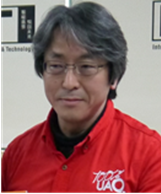
Title: Hot Research Topics in Evolutionary Many-Objective Optimization
Abstract: Evolutionary many-objective optimization is an active research area in the field of evolutionary computation. A large number of new algorithms as well as a variety of modifications of existing algorithms have been proposed for multi-objective optimization problems with four or more objectives. In this presentation, first we show the increasing popularity of evolutionary many-objective optimization. Next, after briefly explaining the basic idea of evolutionary multi-objective optimization, we overview some well-known difficulties in many-objective optimization: search for Pareto optimal solutions, approximation of the entire Pareto front, presentation of a large number of non-dominated solutions, choice of a single final solution, and examination of the search behavior of evolutionary algorithms. Then we explain hot research topics in evolutionary many-objective optimizations such as new test problems, performance indicator examinations, performance comparison of different EMO algorithms, use of a huge population, and focused search on a particular region of interest in the Pareto front.
Bio: Dr. Ishibuchi received the BS and MS degrees from Kyoto University in 1985 and 1987, respectively. In 1992, he received the Ph. D. degree from Osaka Prefecture University where he has been a professor since 1999. From April 2017, he is with Department of Computer Science and Engineering, SUSTech, China as a chair professor. He received a Best Paper Award from GECCO 2004, HIS-NCEI 2006, FUZZ-IEEE 2009, WAC 2010, SCIS & ISIS 2010, FUZZ-IEEE 2011 and ACIIDS 2015. He also received a 2007 JSPS Prize. He was the IEEE CIS Vice-President for Technical Activities (2010-2013), the General Chair of ICMLA 2011, the Program Chair of IEEE CEC 2010 and IES 2014, and a Program/Technical Co-Chair of FUZZ-IEEE 2006, 2011-2013, 2015 and IEEE CEC 2013-2014, 2018, 2019. Currently, he is the President of the Japan EC Society (2016-2018), the Editor-in-Chief of IEEE CI Magazine (2014-2017) and Journal of Japan EC Society (2014-2018), an IEEE CIS AdCom member (2014-2019), an IEEE CIS Distinguished Lecturer (2015-2017). He is also an Associate Editor of IEEE TEVC (2007-2017), IEEE Access (2013-2017) and IEEE TCyb (2013-2017). He is an IEEE Fellow. According to Google Scholar, the total number of citations of his publications is about 20,000 and his h-index is about 60.
Kazuhiko Kawamoto (川本一彦)
Chiba Univ
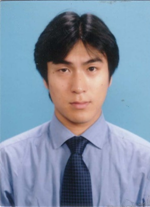
Title: Vision with Deep Learning for Data Assimilation
Abstract: Data assimilation is a framework for refining dynamical simulation models using real observations, and has mainly been developed for geoscience applications such as weather forecasting. The framework itself is general and applicable to a wide range of applications in other research fields. On the other hand, as is well known, deep learning has received considerable attention in recent years and successfully demonstrates its powerfulness on several fields, especially on computer vision applications such as image classification, recognition, and detection. This success in computer vision brings big changes to vision-based sensing; cameras are not only a sensor for recording color but also for higher-level vision tasks. With such higher-level observations, data assimilation becomes increasingly attractive in computer vision. This talk presents some examples of data assimilation based vision with deep learning such as pedestrian path prediction and activity recognition.
BIO: Kazuhiko Kawamoto received the B.E., M.E., and Ph.D. degrees in information engineering from Chiba University, Japan, in 1997, 1999, 2002, respectively. From 2002 to 2005, he was an assistant professor with Tokyo Institute of Technology, Japan. From 2005 to 2009, he was an associate professor with Kyushu Institute of Technology, Japan. He is currently an associate professor with Chiba University, Japan. His research interests include computer vision, pattern recognition, and statistical signal processing.
Isao Ono (小野 功)
Tokyo Institute of Technology
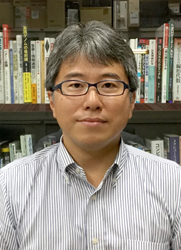
Title: Evolutionary computation for large-scale black-box optimization
Abstract: This talk introduces two evolutionary computation methods proposed by our group for large-scale black-box optimization. The first one is a natural evolution strategy for large-scale black-box function optimization problems. We will explain its basic idea and algorithm, and then show that the proposed method can efficiently find optimal solutions on +1,000-dimensional benchmark problems. The second one is a parallel genetic algorithm for large-scale traveling salesman problems. We will present its basic idea, algorithm and experimental results. The experimental results show that the proposed method succeeded in finding better solutions than the best-known ones of +100,000-city benchmark problems.
Bio: Isao ONO received Dr. of Engineering at Tokyo Institute of Technology, Yokohama, Japan in 1997. He worked as a Lecturer from 1998 to 2001 and as an associate professor from 2001 to 2005 at University of Tokushima. He has been working as an associate professor at Tokyo Institute of Technology since 2005. His research interests include evolutionary computation, optimization and artificial intelligence. He is a member of IEEE, SICE, SCI, JPNSEC, JSAI and so on.
Jinhua She (佘錦華)
China University of Geosciences, Tokyo University of Technology
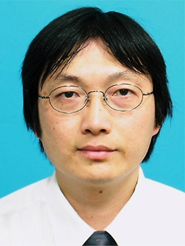
Title: Design of a Bilaterally Asymmetric Pedaling Machine and its Measuring System for Medical Rehabilitation
Abstract: In this talk, I will present a new kind of rehabilitation machine. While most of the commercially available ones are machine-centered, that is, people have to adapt themselves to the machines to do exercises; the structure and characteristics of the one shown in this talk are easily to be adjusted to suit the need for people with lower-limb injuries. So, it is human centered. The consideration for the design of machine structure is investigated from the fields of ergonomics and rehabilitation. And pedaling angles, strokes, and force of this machine can easily be adjusted independently for the left and right legs. Pedaling force and strokes, heart rate, and electromyogram (EMS) signals of walking muscles are recorded using a measuring system. This ensures the interaction between lower-limb exercises, and the computer-based supervision and control of medical rehabilitation. A proto type of half of the machine for one leg was designed and built. Preliminary tests for the basic functions were carried out and demonstrated the validity of the machine and the measuring system.
Bio: Jinhua She received the B.S. degree in engineering from Central South University, Changsha, China, in 1983 and the M.S. and Ph.D. degrees in engineering from the Tokyo Institute of Technology, Tokyo, Japan, in 1990 and 1993, respectively. In 1993, he joined the Department of Mechatronics, School of Engineering, Tokyo University of Technology, where he is currently a Professor. He is also a Qianren Program Visiting Professor of China University of Geosciences (Wuhan). His research interests include the applications of control theory, repetitive control, process control, Internet-based engineering education, and robotics. Dr. She received the International Federation of Automatic Control (IFAC) Control Engineering Practice Paper Prize in 1999 (jointly with M. Wu and M. Nakano), and had been included in Thomson Reuters Highly Cited Researcher from 2012 to 2015.
Ling Wang (王凌)
Tsinghua University
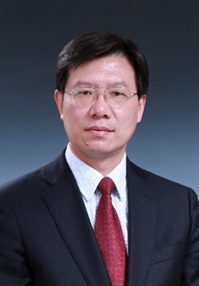
Title: Data-Driven Intelligent Optimization Scheduling
Abstract: Optimization and scheduling problems are the significant issues faced by the manufacturing industry. Over the past few decades, an impressive number of data-driven intelligence algorithms were reported for solving the engineering optimization and scheduling problems (EOSPs). This talk first shows the complexities of the EOSPs; and then introduces a unified framework for the population-base intelligent optimization techniques from a systematic perspective as well as an integrated intelligent optimization framework; finally presents some typical research work in terms of theoretical analysis, constrained optimization and intelligent scheduling algorithms. The primary aim of this talk is to show that intelligent algorithms are powerful and general solution tools for solving the EOSPs, while it is more important to incorporate the problem-specific knowledge into the algorithms for solving specific problems.
Bio: Ling Wang received the B.Sc. and Ph.D. degrees from Tsinghua University, Beijing, China, in 1995 and 1999, respectively, and now is a tenured Professor in Tsinghua Univ. His research interests mainly include intelligent optimization, scheduling and applications. He has authored 5 academic books and more than 130 SCI-indexed papers. His publications have attracted over 13K Google Scholar Citations. Prof. Wang received the National Natural Science Award of China (2014), and the Natural Science Award of the Ministry of Education (MOE) of China (both 2003 and 2007) as well as the Science and Technology Award of Beijing City (2008). He also received the Best Paper Awards of both ACTA AUTOMATICA SINICA (2014) and Control Theory & Applications (2016). He was the recipient of the National Natural Science Fund for Distinguished Young Scholars of China (2015) and the New Century Excellent Talent in University by the MOE of China (2009).
Xiaoke Xu (许小可)
Dalian Minzu University
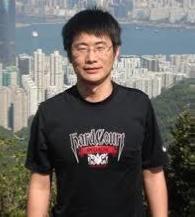
Title: Mining and Visualization of Big Data in Online Social Networks
Abstract: As more and more people use various online social network services and the scales of social networks (and social media) are increasing, the big data in social networks has become a kind of reusable important resources. Based on the theories of computational social sciences (especially network science) and the methods of machine learning, our team worked on several important social services in China such as Tencent QQ, Ali-wangwang and Renren, etc. Furthermore, we also used the similar methods to deal with several typical big data in social networks such as massive mobile communication data by means of data mining and data visualization. We proposed several typical application scenarios from two levels of networks: ego network and full network. And finally we put forward some commonly used quantitative indexes and a new study paradigm for computational communication in social networks based on complex network theories. Our research is helpful to uncover the mechanism of information and behavior spreading in social networks, and can be potentially used to analyze other big data and design smart city.
Bio: Dr. Xiao-Ke Xu obtained his Bachelor’s degree (2001) in Electronic and Information engineering and PhD (2008) in Communication and Information System from Dalian Maritime University in China. Dr. Xu was the postdoctoral fellow at Hong Kong Polytechnic University and the visiting scholar at City University of Hong Kong. Now he is a professor at College of Information and Communication Engineering, Dalian Minzu University. He got the CCF-Tencent Hornbill Research Funding and won the first prize in Alibaba Data Innovation Competition & Alibaba Young Scholars Supporting Project. He won the title of “Star of Science and Technology” of Dalian in 2014, and got the fund of the Excellent Talents Supporting Project of Liaoning Province. He focuses his research on complex network, big data of social networks and computational communication, etc. He has published near 30 academic papers in the SCI journals, such as the famous journal of proceedings of the National Academy of Sciences (PNAS). Since November 2016, he joined the 17th group “doctoral service corps” of the Organization Department of the CPC Central Committee for the temporary position of the assistant principal in Guizhou University, working at the Big Data Industry Development and Application Research Institute of Guizhou Province and Public Big Data State Key Laboratory (preparing).
Fuchun Sun (孙富春)
Tsinghua University
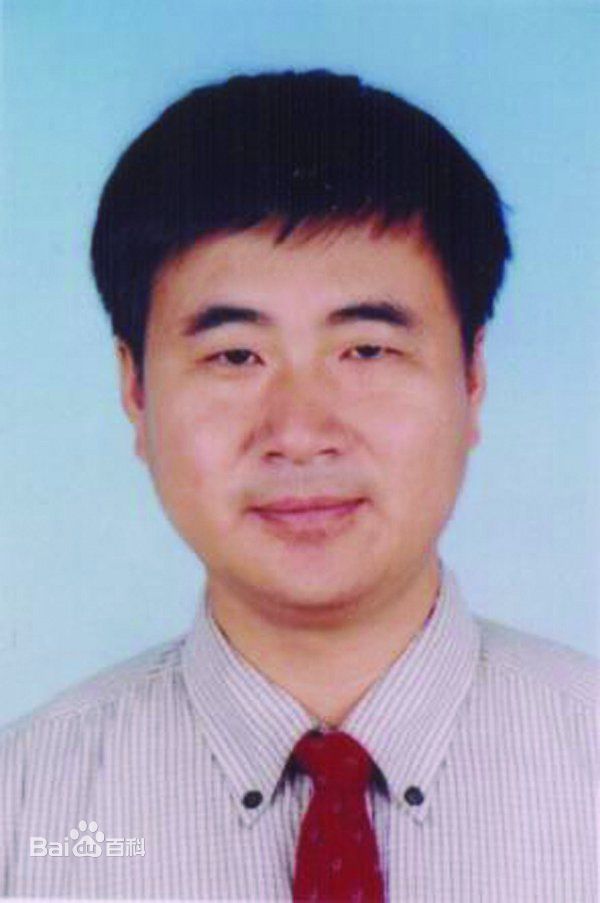
Title:Sensing and Processing of Spatial-temporal Data for Robot Dexterous Operations
Abstract: Spatial-temporal data including videos and tactile sequences provide robots with necessary clues for environmental sensing and object recognition for robots, which is central to the robotic dexterous operations. Due to the several difficulties of the coupling on the spatial and temporal patterns, high dimensionality and multi-modal structure, it is very challenging topics for processing of spatial-temporal data. In this talk, we will present the developed high-resolution four-modal sensor device which contains micro-vision, tactile/slip sensors and temperature. A new type of dexterous hand is developed, where four-modal device is equipped and muscle like actuation. A more systematic method of spatial-temporal data processing is used to solve the joint representation and fusion of vision and tactile sensation, as well as sensing-actuation mapping problems. Finally, some experiments are used to reveal the proposed theoretical approach and point out the future directions.
Bio: Dr. Fuchun Sun is professor of Department of Computer Science and Technology and President of Academic Committee of the Department, Tsinghua University, deputy director of State Key Lab. of Intelligent Technology & Systems, Beijing, China. His research interests include robotic perception and intelligent control. He has won the Champion of Autonoumous Grasp Challenges in IROS2016. Dr. Sun is the recipient of the excellent Doctoral Dissertation Prize of China in 2000 by MOE of China and the Choon-Gang Academic Award by Korea in 2003, and was recognized as a Distinguished Young Scholar in 2006 by the Natural Science Foundation of China. He served as an associated editor of IEEE Trans. on Neural Networks during 2006-2010, IEEE Trans. on Fuzzy Systems since 2011 and IEEE Trans. on Systems, Man and Cybernetics: Systems since 2015.
Witold Pedrycz
University of Alberta

Title: Linkage Discovery: Bidirectional and Multidirectional Associative Memories and Information Granules
Abstract: Associative memories are representative examples of associative structures, which have been studied intensively in the literature and have resulted in a plethora of applications in areas of control, classification, and data analysis. The underlying idea is to realize associative mapping so that the recall processes (both one-directional and bidirectional) are characterized by a minimal recall error. We revisit and augment the concept of associative memories by proposing some new design directions. We focus on the essence of structural dependencies in the data and make the corresponding associative mappings spanned over a related collection of landmarks (prototypes). We show that a construction of such landmarks is supported by mechanisms of collaborative fuzzy clustering. A logic-based characterization of the developed associations established in the framework of relational computing is discussed as well. Furthermore we generalize associative mappings into their granular counterparts in which the originally formed numeric prototypes are made granular so that the quality of the associative recall can be quantified. Several scenarios of allocation of information granularity aimed at the optimization of the characteristics of recalled results (information granules) quantified in terms of coverage and specificity criteria are proposed. Structural augmentations of the discussed architectures to multisource and multi-directional memories involving associative mappings among various data spaces are proposed and their design is discussed.
Bio: Witold Pedrycz (IEEE Fellow, 1998) is Professor and Canada Research Chair (CRC) in Computational Intelligence in the Department of Electrical and Computer Engineering, University of Alberta, Edmonton, Canada. He is also with the Systems Research Institute of the Polish Academy of Sciences, Warsaw, Poland. In 2009 Dr. Pedrycz was elected a foreign member of the Polish Academy of Sciences. In 2012 he was elected a Fellow of the Royal Society of Canada. Witold Pedrycz has been a member of numerous program committees of IEEE conferences in the area of fuzzy sets and neurocomputing. In 2007 he received a prestigious Norbert Wiener award from the IEEE Systems, Man, and Cybernetics Society. He is a recipient of the IEEE Canada Computer Engineering Medal, a Cajastur Prize for Soft Computing from the European Centre for Soft Computing, a Killam Prize, and a Fuzzy Pioneer Award from the IEEE Computational Intelligence Society.
His main research directions involve Computational Intelligence, fuzzy modeling and Granular Computing, knowledge discovery and data mining, fuzzy control, pattern recognition, knowledge-based neural networks, relational computing, and Software Engineering. He has published numerous papers in this area. He is also an author of 15 research monographs covering various aspects of Computational Intelligence, data mining, and Software Engineering.
All manuscripts must be submitted electronically in PDF format before the deadline. Only English manuscripts are acceptable. The initial version of each paper cannot exceed 8 pages. The camera-ready version of each accepted paper is also up to 8 pages in total, but each page in excess of 6 will incur an extra charge. Manuscripts should be on A4 sized paper (210 mm x 297 mm), in two-column format, with top and bottom margins of 25 mm, left and right margins of 20 mm, column width of 80 mm, and inter-column gap of 5 mm. All figures and tables should be clearly visible, and the paper format should be referenced to https://www.fujipress.jp/jaciii/jc-authors/#materials. A complete paper should be submitted via https://conf.fujipress.com/iwaciii2017/ (available after May 1). Selected papers will also be published in the special issue of JACIII (currently scheduled in Vol.22 No.4, 2018 July issue)
Please download the IWACIII 2017 Program by clicking on the link "/pub/iwaciii/docs/2017-10/20171010141412777651.pdf".
>>>>>>>>>>>>>>>>>>>>>>>>>>>>>>>>>>>>>>>>>>>>>>>>>>>>>>>>>>>>>>>>>>>>>>>>>>>>>>>>>
Please complete the registration form and send it to iwaciii2017@163.com before August 25, 2017.
The registration form can be downloaded by the link ''/pub/iwaciii/docs/2017-05/4c6977fd4ebd44878fa2e8d13f279bac.doc'' (pls. click on the link to download it!). If you can not download the registration form, please retry by changing your browser to others e.g., from MS IE to Firefox or MS Edge.
Registration Payment:
For Chinese
For Chinese participants, please transfer the registration fee to the following account; please also pay special attention to the subsequent important reminder notice:
账户信息:
| 单位名称 |
北京理工大学 |
| 单位开户行及账号 |
中国工商银行北京紫竹院支行 0200007609014435495 |
| 纳税人识别号 |
110108400009127 |
| 单位地址 |
北京市海淀区中关村南大街5号 |
特别提醒:
1. 请务必在汇款或转账时填写附言,格式为:iwaciii +文章编号+作者姓名(中文);
2. 作者将汇款/转账回执单扫描件、付款人手机号、发票抬头(务必核实准确)、邮递地址和邮编(如需邮寄发票)发送至邮箱 iwaciii2017@163.com;邮件标题格式:文章编号+回执信息;
3. 请在转账/汇款时留出银行转账时间,以保证在2017年8月25号前转账汇款到账;
For Japanese
Since it may bring some difficulties to transfer registration fee from Japan to Beijing by using international bank transfer, we would like to recommend participants living in Japan to pay the registration fee (in Japanese yen) to the following account
みずほ銀行 大岡山支店(支店番号145)
普通口座 1825115
名義 ヒロタケンキュウシツダイヒョウヒロタカオル
Please note that
1) Money transfer charge should be paid by participants,
2) Remitter's name should be the participants name (in the case if other name is used, please inform the name and the date to conference secretary by e-mail).
For Other Foreigners
If you can attend the conference IWACIII 2017 during Nov 2-5, 2017 at Beijing, China, you can pay by Chinese money cash only (no credit card service) on site.
If you have any further questions about the registration and payment, please contact Miss Rongli Li (Email: iwaciii2017@163.com ; Office Tel.: 86-10-68915616) .
Conference Venue: China Hall of Science and Technology (CHST) <中国科技会堂>
Address: Fuxing Road #3, Haidian District, Beijing 100863 <北京市海淀区复兴路3号, 100863>


If you are required to provide an invitation letter or need our assistance during VISA applications, do not hesitate to contact us.
Contact: Miss Rongli Li
Part 1: For Guests who arrive at the Beijing Capital International Airport
[Airport Express and Beijing Subway], [Airport Shuttle], [Airport Taxi]
Part 2: For Guests who arrive at the Railway Stations
[Beijing South Railway Station], [Beijing West Railway Station], [Beijing Railway Station]
Part 1: For Guests who arrive at the Beijing Capital International Airport
Oversea guests on arrival may depart from Terminal 3 of the Beijing Capital International Airport to the Conference Venue (China Hall of Science and Technology, Fuxing Road #3, Haidian District) or neighboring hotels by airport shuttle, taxi or subway.
The inner map of the Beijing Capital International Airport can be found at the website http://en.bcia.com.cn/.
1. Airport Express and Beijing Subway (Suggested!)
The most convenient subway route is marked in the following map.
The total cost for the travel by subway is about 30 RMB with nearly an hour's journey.
Operation period: 6:20—22:30
Take the Airport Express at Terminal 3, and only two transfers are needed. The first is at the DongZhiMen Station (东直门), transferring from Airport Express to Line 2 (FuXingMen Direction 复兴门方向). The second is at the JianGuoMen Station (建国门), transferring from Line 2 to Line 1 (PingGuoYuan Direction 苹果园方向). Get off at the MuXiDi station (木樨地) and walk out of the station by Exit A1. Then, you can go ahead and walk about 400 meters to reach the east gate of China Hall of Science and Technology after getting out of the station by Exit A1 (we will have volunteers at Exit A1 to guide you).
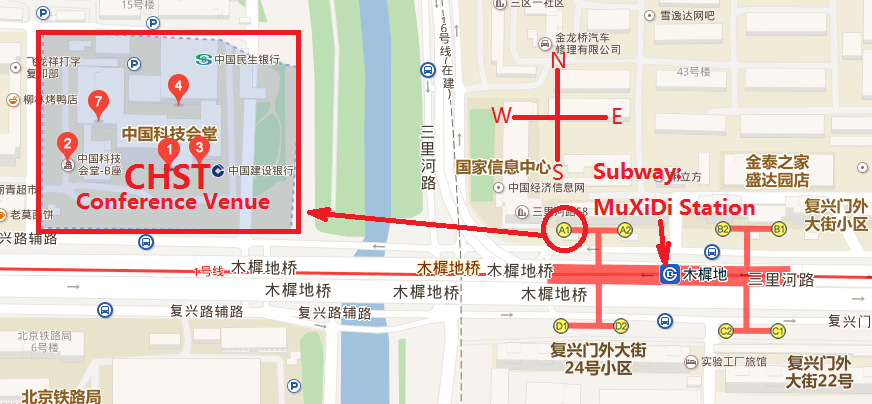
Buy tickets from the bus ticket offices at Gate No.8 or No.9 (Outside) on the 1st Floor of Terminal 3.
Scheme 1: Airport Shuttle Line 2 (Beijing Capital International Airport—Xidan) [in Chinese: 2号线,西单线]
Bus Route: T3 -- T2 -- T1 -- Yonghegong[RMB 25] -- Andingmen[RMB 25] -- Jishuitan [RMB 25] -- South of Xizhimen Bridge[RMB 30] -- Fuxingmen [RMB 30] (复兴门) -- South of Xidan Intersection [RMB 30].
Get off at the Fuxingmen Station (复兴门). Please let the bus driver remind you of the arrival at this station.
Price: 30 RMB
Time: about 1.5 hours if no traffic jam occurs.
Operation period: 7:00~24:00. Buses depart when fully seated, with an interval of no more than 30 minutes.
The position of the bus stop for debarkation can be found in the following map.
Then, you can take a taxi to reach the China Hall of Science and Technology (about 4 kilometers, about 16 RMB cost).
Scheme 2: Airport Shuttle Line 2 [Night Bus] (Beijing Capital International Airport—Xidan) [in Chinese: 2号线,西单线]
Bus Route: T3 -- T2 -- T1 -- Sanyuanqiao[RMB 20] -- Dongzhimen Transport Hub[RMB 30] -- Dongsishitiao Bridge[RMB 30] -- Chaoyangmen[RMB 30] -- Yabaolu[RMB 30] -- Beijing Railway Station[RMB 30] -- Beijing International Hotel[RMB 30] -- Xidan [RMB 30] (西单).
Get off at the Xidan Station (西单). Please let the bus driver remind you of the arrival at this station.
Price: 30 RMB
Time: about 1.5 hours if no traffic jam occurs.
Operation period: from 24:00 to the last domestic arrival of the day. Buses depart when fully seated, with an interval of no more than 30 minutes.
The position of the bus stop for debarkation can be found in the following map.
Then, you can take a taxi to reach China Hall of Science and Techonology (about 4 kilometers, about 16 RMB cost).
Scheme 3: Airport Shuttle Line 2 (Xidan—Beijing Capital International Airport) [in Chinese: 2号线,西单线]
Bus Route: Xidan (100 meters south of Exit J1 of Xidan Subway Station)[RMB 30] (西单) -- Chegongzhuang (Exit B, Chegongzhuang Subway Station) [RMB 30] --- Yonghegong (Exit B, Yonghegong Subway Station) [RMB 25] -- T2 -- T1 -- T3.
Price: 30 RMB
Time: about 1.5 hours if no traffic jam occurs.
Operation period: 5:10~21:00. Buses depart when fully seated, with an interval of no more than 30 minutes.
The position of the bus stop for boarding can be found in the following map.
You can take a taxi to reach the bus stop for boarding (about 4 kilometers, about 16 RMB cost).
Please let the taxi driver clearly know your destination. The conference venue is located at the Fuxing Road #3 (复兴路3号), Haidian District (海淀区). The journey is about 35 km and will take about 1 hour if no traffic jam occurs.
The charge of a taxi from Beijing Capital International Airport to the conference venue or neighboring hotels is about 110 RMB.
Part 2: For Guests who arrive at the Railway Stations
Guests on arrival may reach the Conference Venue (China Hall of Science and Techonology, Fuxing Road #3, Haidian District) or neighboring hotels by subway or taxi.
1. Beijing South Railway Station
Subway:
The most convenient subway route is marked in the following map.
The total cost for the travel by subway is about 4 RMB with nearly 20 minutes’ journey.
Operation period: 5:15—23:00.
Taxi:
Please let the taxi driver clearly know your destination. The conference venue is located at the Fuxing Road #3 (复兴路3号), Haidian District (海淀区). The journey is about 10 km and will take about 20 minutes if no traffic jam occurs.
The charge of a taxi from Beijing South Railway Station to the conference venue or neighboring hotels is about 30 RMB.
2. Beijing West Railway Station
Subway:
The most convenient subway route is marked in the following map.
The total cost for the travel by subway is about 3 RMB with nearly 10 minutes’ journey.
Operation period: 5:40—23:30.
Taxi:
Please let the taxi driver clearly know your destination. The conference venue is located at the Fuxing Road #3 (复兴路3号), Haidian District (海淀区). The journey is about 2.5 km and will take about 10 minutes if no traffic jam occurs.
The charge of a taxi from Beijing West Railway Station to the conference venue or neighboring hotels is about 13 RMB.
Subway:
The most convenient subway route is marked in the following map.
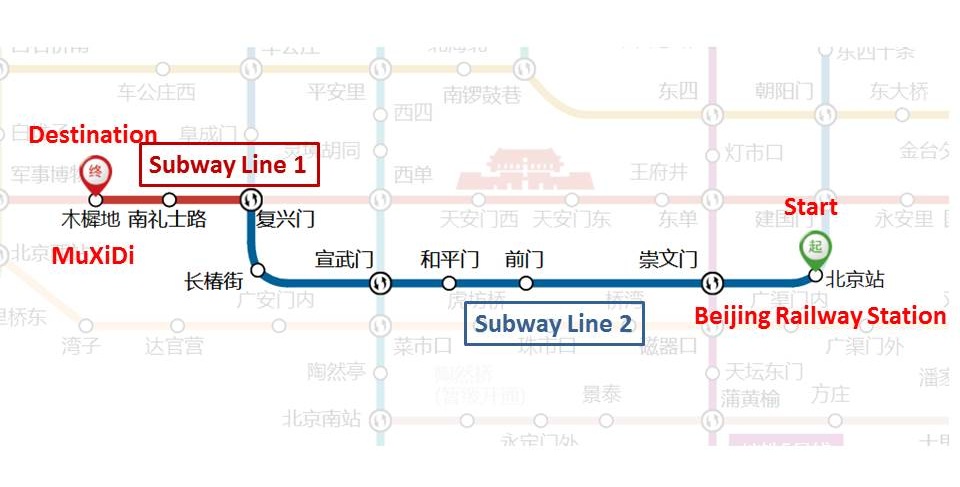
The total cost for the travel by subway is about 4 RMB with nearly 20 minutes’ journey.
Operation period: 5:15—22:30.
Taxi:
Please let the taxi driver clearly know your destination. The conference venue is located at the Fuxing Road #3 (复兴路3号), Haidian District (海淀区). The journey is about 9 km and will take about 30 minutes if no traffic jam occurs.
The charge of a taxi from Beijing Railway Station to the conference venue or neighboring hotels is about 30 RMB.
Badaling Great Wall


The Great Wall is a must for a China tour, while Badaling is a must for a Great Wall tour. Badaling Great Wall in Beijing is the best-preserved and most complete section among the various, hence the most popular, even among world leaders. You should visit it at least once in your life.
Beijing Summer Palace




Situated in the Haidian District northwest of Beijing, Summer Palace is 9 miles (15 kilometers) from the downtown area. Being the largest and most well-preserved royal park in China, it greatly influences Chinese horticulture and landscape with its famous natural views and cultural interests, which also has long been recognized as 'The Museum of Royal Gardens'.
Inquiry: IWACIII 2017 secretariat, Miss Rongli Li
copyright@ IWACIII 2021 . Beijing Institute of Technology

